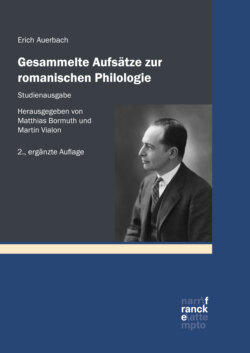Читать книгу Gesammelte Aufsätze zur romanischen Philologie – Studienausgabe - Erich Auerbach - Страница 14
Figurative texts illustrating certain passages of Dante’s Commedia (1946)
ОглавлениеIn an earlier article1 I tried to analyse the structure of the figurative or typological interpretationFiguraldeutung of the Holy Scriptures and to prove its influence during the first centuries of Christianity and the Middle Ages upon the conception of all earthly events; and especially I endeavoured to show by some examples important for the general composition of the Commedia (CatoCato v. Utica, VergilVergil, Beatrice) how deeply DanteDante was involved in typological ideas. Here I intend to discuss some more particular passages, the understanding of which maybe advanced in the light of figurative texts. The figurative interpretation of the Bible created a world of interrelations, a world in which mediaeval theologians moved quite naturally and which was familiar even to laymen through sermons, religious representations and art; from this material a poet like Bernard de ClairvauxBernhard v. Clairvaux produced his most beautiful creations. During the fourteenth century this world began to decay; the eighteenth century destroyed it almost completely, and for us it has vanished; even distinguished modern theologians are not always able to perceive and to understand figurative allusions.
Since I am writing in Istanbul (1945) where very few publications on DanteDante are available, I cannot always be sure whether some of my observations may not have been made by others.
